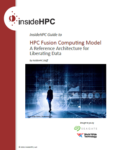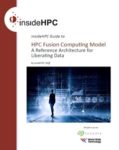insideHPC Guide to HPC Fusion Computing Model – A Reference Architecture for Liberating Data
This insideHPC technology guide discusses how organizations need to adopt a Fusion Computing Model to meet the needs of processing, analyzing, and storing the data to no longer be static. This guide (i) provides an overview of the Fusion Computing Model; (ii) describes how Seagate Technology PLC (Seagate) and Intel Corporation technologies can meet fusion […]
Panasas PanFS 8: Architectural Overview
The PanFS® parallel file system delivers the highest performance among competitive HPC storage systems at any capacity, and takes the complexity and unreliability of typical high-performance computing (HPC) storage systems off your hands, and it does so using commodity hardware at competitive price points. In this white paper, we’re going to take a “breadth-first” tour of the architecture of PanFS, looking at its key components then diving deep into the main benefits.
Component Architecture for Scientific HPC
The Common Component Architecture (CCA) provides a means for software developers to manage the complexity of large-scale scientific simulations and to move toward a plug-and-play environment for high-performance com- puting. In the scientific computing context, component models also promote collaboration using independently developed software, thereby allowing particular individu- als or groups to focus on the aspects of greatest interest to them. The CCA supports parallel and distributed computing as well as local high-performance connections between components in a language-independent manner. The design places minimal requirements on components
Architectural Properties for HPC
High Performance computer systems can be regarded as the most powerful and flexible research instruments today. They are employed to model phenomena in fields so various as climatology, quantum chemistry, computational medicine, High-Energy Physics and many, many other areas.








